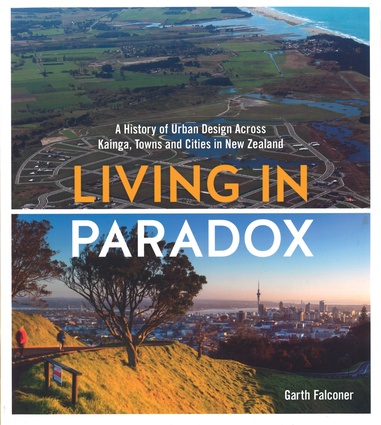Book review: Living in Paradox
Matthew Bradbury reviews Living in Paradox: A History of Urban Design across Kainga, Towns and Cities in New Zealand, by Garth Falconer.
What sort of book is this? It’s big and it’s heavy and, while it says it’s a history on the cover, it doesn’t really read like a history. It doesn’t seem to have a beginning or an end or to travel in one direction. It is more of a portmanteau than a dissertation. And who is the audience for the book? Is it for landscape architects? Or urbanists? Or architects?
It was a bit unclear until it dawned on me that Garth Falconer has written a book for all of us, as citizens of New Zealand. Now, notwithstanding pākehā foundation myths – especially the story of the hardy settler, the man alone in the bush – Falconer reminds us that, actually, pākehā have always been urban and, so, the planning and propagation of New Zealand’s cities is a fascinating story.
But, as Falconer suggests, the settlers always seemed to do something wrong; the cities and the buildings never quite look like the pictures and plans that they were copying from America or Europe. Of course, this tendency is most prevalent in Auckland where Katrina Simon, senior academic at the University of New South Wales, has observed that Aucklanders will commit happily to the most ambitious civic schemes but, when they build them, they will build only ever the first bits.
The best example, of course, is Gummer and Ford’s 1925 scheme for a grand civic gateway to Queen Street, the Urbis Porta project, where they built one side of the city gate, the Dilworth building, but not the other. Another example is the 1948 proto Aotea Square scheme, where a grid of modernist government offices was to be built from Queen Street to Hobson Street but, in the end, just one was built, the Bledisloe building.
So, how do we proceed? Falconer believes that, as a citizen, each of us has a right to participate in the making of our civic life and a duty to take part in how our cities should develop.










